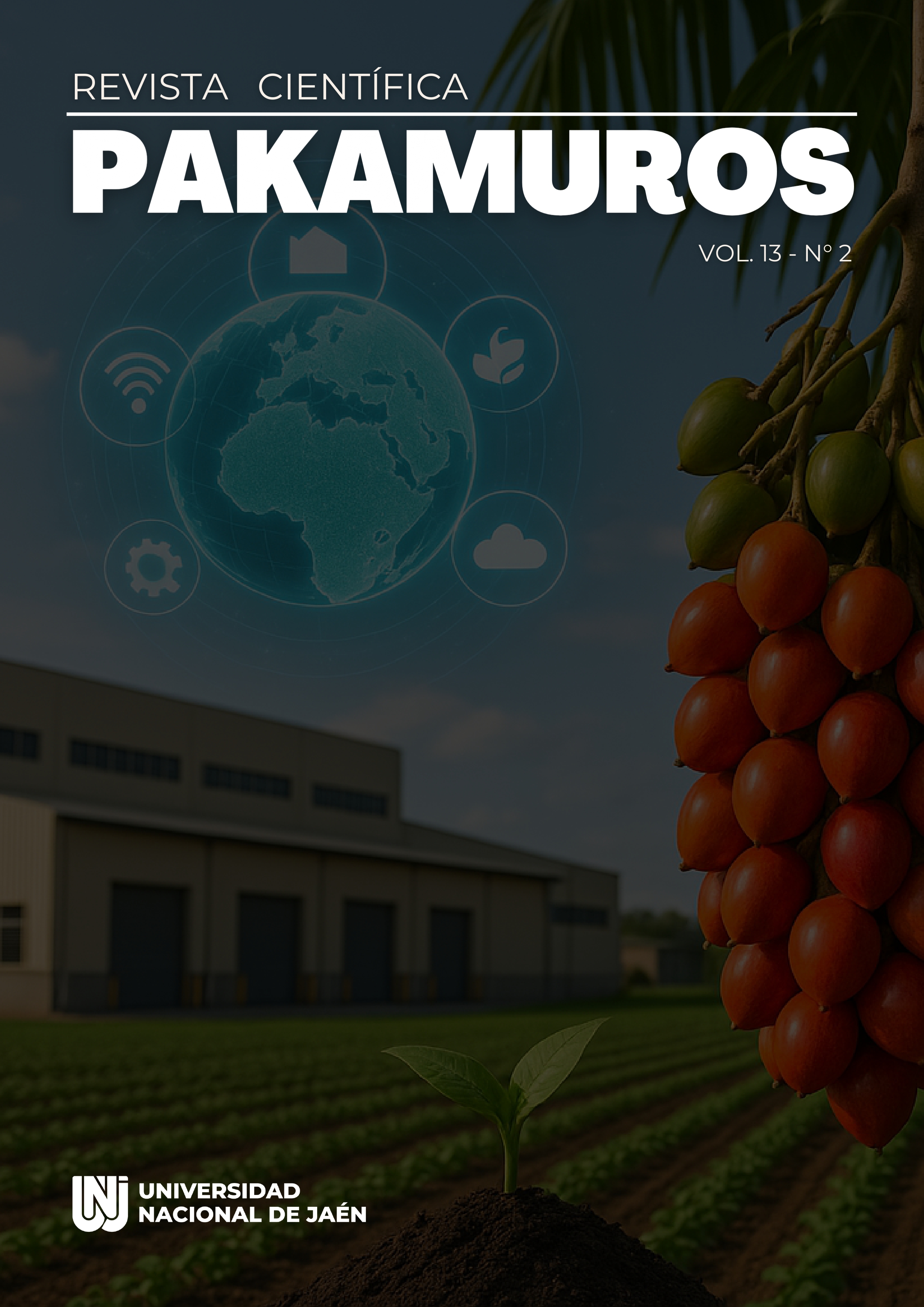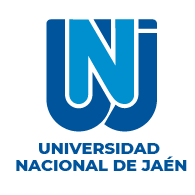The potential of pijuayo (Bactris gasipaes) as a new ingredient in meat and fish products
DOI:
https://doi.org/10.37787/8bnmgt11Keywords:
Processed meats , Fat substitutes, Extender ingredients, Natural colorants, Amazonian fruitsAbstract
The association of processed food consumption with health problems has sparked interest among consumers and the food industry in the production of healthier and more sustainable foods. Processed meats, which are made from the skeletal muscle of edible animal species, have unfavorable characteristics due to the incorporation of ingredients and synthetic additives associated with the occurrence of diseases and allergies. In this context, this review presents the pijuayo as a healthy and sustainable alternative in the formulation of meat and fish products. The nutritional benefits of this Amazonian resource are described, as well as its uses reported in the literature. The pulp, peel, stem, and oil extracts of pijuayo have been used to replace animal fat and to act as extenders and colorants in processed meats. The benefits include the enhance of sensory characteristics and acceptability related to texture and flavor, as well as the potential to reduce lipid oxidation and partially replace nitrites as a colorant. However, further studies are still needed to evaluate the effect of pijuayo on processed meats from a holistic perspective, including nutritional aspects and health effects.
References
Amorim, I. S., Amorim, D. S., Godoy, H. T., Mariutti, L. R. B., Chisté, R. C., da Silva Pena, R., Bogusz Junior, S., & Chim, J. F. (2024). Amazonian palm tree fruits: From nutritional value to diversity of new food products. Heliyon, 10(2), 1–17. https://doi.org/10.1016/j.heliyon.2024.e24054
Balestra, F., & Petracci, M. (2019). Chapter 3 - Technofunctional Ingredients for Meat Products: Current Challenges (C. M. B. T.-S. M. P. and P. Galanakis (ed.); pp. 45–68). Academic Press. https://doi.org/https://doi.org/10.1016/B978-0-12-814874-7.00003-1
Beriain, M. J., Gómez, I., Ibáñez, F. C., Sarriés, M. V., & Ordóñez, A. I. (2018). Chapter 1 - Improvement of the Functional and Healthy Properties of Meat Products. In A. M. Holban & A. M. B. T.-F. Q. B. H. and D. Grumezescu (Eds.), Handbook of Food Bioengineering (pp. 1–74). Academic Press. https://doi.org/https://doi.org/10.1016/B978-0-12-811442-1.00001-8
Bouvard, V., Loomis, D., Guyton, K. Z., Grosse, Y., Ghissassi, F. El, Benbrahim-Tallaa, L., Guha, N., Mattock, H., & Straif, K. (2015). Carcinogenicity of consumption of red and processed meat. The Lancet Oncology, 16(16), 1599–1600. https://doi.org/10.1016/S1470-2045(15)00444-1
Carvalho, R. P., Lemos, J. R. G., de Aquino Sales, R. S., Martins, M. G., Nascimento, C. H., Bayona, M., Marcon, J. L., & Monteiro, J. B. (2013). The consumption of red pupunha (Bactris gasipaes Kunth) increases HDL cholesterol and reduces weight gain of lactating and post-lactating wistar rats. The Journal of Aging Research & Clinical Practice, 2(3), 257–260.
Clement, C. R. (2024). Agrobiodiversity in Amazonia (S. M. B. T.-E. of B. (Third E. Scheiner (ed.); pp. 228–238). Academic Press. https://doi.org/https://doi.org/10.1016/B978-0-12-822562-2.00170-5
Costa, R. D. S. da, Rodrigues, A. M. da C., & Silva, L. H. M. da. (2022). The fruit of peach palm (Bactris gasipaes) and its technological potential: an overview. In Food Science and Technology (Vol. 42). scielo.
de Souza Mesquita, L. M., Neves, B. V., Pisani, L. P., & de Rosso, V. V. (2020). Mayonnaise as a model food for improving the bioaccessibility of carotenoids from Bactris gasipaes fruits. LWT, 122, 109022. https://doi.org/10.1016/J.LWT.2020.109022
Echeverria, L., Jéssica Da, ;, Rigoto, M., Antônio, ;, Martinez, C., Daniele, B., Porciuncula, A., Scanavacca, J., Cervejeira, B., & Barros, B. (2020). Characterization of lamb burgers with addition of flour from peach palm by-product. Bioscience Journal , 36, 280–289. https://doi.org/10.14393/BJ-V36N0A2020-53635
Eduardo, K., Aredo, V., Rios-Mera, J. D., Ambrosio, C. M. S., Siche, R., & Saldaña, E. (2024). Chapter 13 - Market needs and consumer’s preferences for healthier foods. In J. M. B. T.-S. to I. the Q. of F. Lorenzo (Ed.), Developments in Food Quality and Safety (pp. 337–355). Academic Press. https://doi.org/https://doi.org/10.1016/B978-0-443-15346-4.00013-6
FAO. (2022). Bactris gasipaes - GAEZ Data Portal. https://gaez.fao.org/pages/ecocrop-find-plant
Guzmán, H., Llatas, A. Y., Arteaga, H., Saldaña, E., Tello, F., & Rios-Mera, J. D. (2023). Pijuayo (Bactris gasipaes) Pulp and Peel Flours as Partial Substitutes for Animal Fat in Burgers: Physicochemical Properties. In Biology and Life Sciences Forum (Vol. 26, Issue 1). https://doi.org/10.3390/Foods2023-15039
Jaramillo-Vivanco, T., Balslev, H., Montúfar, R., Cámara, R. M., Giampieri, F., Battino, M., Cámara, M., & Alvarez-Suarez, J. M. (2022). Three Amazonian palms as underestimated and little-known sources of nutrients, bioactive compounds and edible insects. Food Chemistry, 372, 131273. https://doi.org/https://doi.org/10.1016/j.foodchem.2021.131273
Llatas, A. Y., Guzmán, H., Tello, F., Ruiz, R., Vásquez, J., Chiroque, G., Mayta-Hancco, J., Cruzado-Bravo, M. L. M., Arteaga, H., Saldaña, E., & Rios-Mera, J. D. (2024). Exploring Pijuayo (Bactris gasipaes) Pulp and Peel Flours as Fat Replacers in Burgers: A Multivariate Study on Physicochemical and Sensory Traits. In Foods (Vol. 13, Issue 11). https://doi.org/10.3390/foods13111619
Lonergan, S. M., Topel, D. G., & Marple, D. N. (2019). Chapter 13 - Fresh and cured meat processing and preservation (S. M. Lonergan, D. G. Topel, & D. N. B. T.-T. S. of A. G. and M. T. (Second E. Marple (eds.); pp. 205–228). Academic Press. https://doi.org/https://doi.org/10.1016/B978-0-12-815277-5.00013-5
Mills, E. (2014a). ADDITIVES | Extenders (M. Dikeman & C. B. T.-E. of M. S. (Second E. Devine (eds.); pp. 1–6). Academic Press. https://doi.org/https://doi.org/10.1016/B978-0-12-384731-7.00108-2
Mills, E. (2014b). ADDITIVES | Functional (M. Dikeman & C. B. T.-E. of M. S. (Second E. Devine (eds.); pp. 7–11). Academic Press. https://doi.org/https://doi.org/10.1016/B978-0-12-384731-7.00107-0
Montero, M. L., Rojas-Garbanzo, C., Usaga, J., & Pérez, A. M. (2022). Nutritional composition, content of bioactive compounds, and hydrophilic antioxidant capacity of selected Costa Rican fruits. Agronomía Mesoamericana, 33(2 SE-Articles), 46175. https://doi.org/10.15517/am.v33i2.46175
Noronha Matos, K. A., Praia Lima, D., Pereira Barbosa, A. P., Zerlotti Mercadante, A., & Campos Chisté, R. (2019). Peels of tucumã (Astrocaryum vulgare) and peach palm (Bactris gasipaes) are by-products classified as very high carotenoid sources. Food Chemistry, 272, 216–221. https://doi.org/10.1016/J.FOODCHEM.2018.08.053
O’Farrell, M. (2011). 22 - Online quality assessment of processed meats. In J. P. Kerry & J. F. B. T.-P. M. Kerry (Eds.), Woodhead Publishing Series in Food Science, Technology and Nutrition (pp. 546–566). Woodhead Publishing. https://doi.org/https://doi.org/10.1533/9780857092946.3.546
Paglarini, C. de S., Furtado, G. de F., Biachi, J. P., Vidal, V. A. S., Martini, S., Forte, M. B. S., Cunha, R. L., & Pollonio, M. A. R. (2018). Functional emulsion gels with potential application in meat products. Journal of Food Engineering, 222, 29–37. https://doi.org/https://doi.org/10.1016/j.jfoodeng.2017.10.026
Peixoto Araujo, N. M., Arruda, H. S., Marques, D. R. P., de Oliveira, W. Q., Pereira, G. A., & Pastore, G. M. (2021). Functional and nutritional properties of selected Amazon fruits: A review. Food Research International, 147(June). https://doi.org/10.1016/j.foodres.2021.110520
Pinzón-Zárate, L. X., Hleap-Zapata, J. I., & Ordóñez-Santos, L. E. (2015). Análisis de los parámetros de color en salchichas Frankfurt adicionadas con extracto oleoso de residuos de chontaduro (Bactris Gasipaes). Información Tecnológica, 26(5), 45–54. https://doi.org/10.4067/S0718-07642015000500007
Rios-Mera, J. D., Arteaga, H., Ruiz, R., Saldaña, E., & Tello, F. (2024). Amazon Fruits as Healthy Ingredients in Muscle Food Products: A Review. In Foods (Vol. 13, Issue 13). https://doi.org/10.3390/foods13132110
Rios-Mera, J. D., Saldaña, E., Patinho, I., Selani, M. M., & Contreras-Castillo, C. J. (2021). Advances and gaps in studies on healthy meat products and their relationship with regulations: The Brazilian scenario. Trends in Food Science & Technology, 110, 833–840. https://doi.org/https://doi.org/10.1016/j.tifs.2021.01.092
Saldaña, E., Merlo, T. C., Patinho, I., Rios-Mera, J. D., Contreras-Castillo, C. J., & Selani, M. M. (2021). Use of sensory science for the development of healthier processed meat products: a critical opinion. Current Opinion in Food Science, 40, 13–19. https://doi.org/https://doi.org/10.1016/j.cofs.2020.04.012
Santos, Y. J. S., Facchinatto, W. M., Rochetti, A. L., Carvalho, R. A., Le Feunteun, S., Fukumasu, H., Morzel, M., Colnago, L. A., & Vanin, F. M. (2023). Systemic characterization of pupunha (Bactris gasipaes) flour with views of polyphenol content on cytotoxicity and protein in vitro digestion. Food Chemistry, 405, 134888. https://doi.org/https://doi.org/10.1016/j.foodchem.2022.134888
Silva Ribeiro, G., Conceição Monteiro, M. K., Rodrigues do Carmo, J., da Silva Pena, R., & Campos Chisté, R. (2021). Peach palm flour: production, hygroscopic behaviour and application in cookies. Heliyon, 7(5), e07062. https://doi.org/10.1016/J.HELIYON.2021.E07062
Souza-Santos, Y. J., Argento, M. B. V, Facchinatto, W. M., Xavier, P. L. P., Rochetti, A. L., Lourenço, C. M., Carvalho, R. A., Fukumasu, H., Colnago, L. A., & Vanin, F. M. (2025). Modulation of physicochemical, digestibility, and cytotoxic properties of pupunha (Bactris gasipaes) flour by different processes. Food Research International, 209, 116159. https://doi.org/https://doi.org/10.1016/j.foodres.2025.116159
Wang, Z., Wu, Z., Tu, J., & Xu, B. (2023). Muscle food and human health: A systematic review from the perspective of external and internal oxidation. Trends in Food Science & Technology, 138, 85–99. https://doi.org/https://doi.org/10.1016/j.tifs.2023.06.006
World Health Organization - WHO. (2023). Red and processed meat in the context of health and the environment: many shades of red and green: information brief. https://www.who.int/publications/i/item/9789240074828
Zapata, J. I. H., & de la Pava, G. C. R. (2015). Propiedades texturales y sensoriales de salchichas de tilapia roja (Oreochromis sp.) con adición de harina de chontaduro. Ing
Published
Issue
Section
License
Copyright (c) 2025 Pakamuros Scientific Journal

This work is licensed under a Creative Commons Attribution-NonCommercial 4.0 International License.













